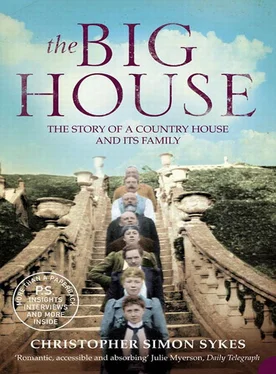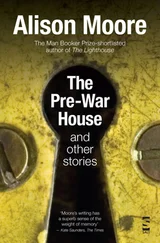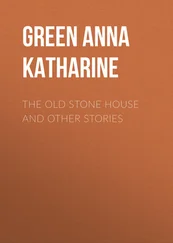As work on the new house progressed, Richard turned his attention once again to the landscape, and with the help of Mr Perfect set to work planning a garden. According to Richard Kirkby, whose family were tenants of the estate, ‘in order to make out Buildings, Gardens, Lawns and other necessary Conveniences to the New House, he took the old Pond or Marr into the ground called the Lawn, which then might contain an acre and upwards and before that Time laid open to the York, Malton and Scarborough roads … he also removed a Hill called Green Hill, along the North and South side of which the Roads went to York and Malton and to the Church, and inclosed the Hill and both the Roads within this Lawn by a Brick Wall.’ 22 This brick wall, which remains today, was in fact an elaborate form of ha-ha, with triangular, rectangular and semicircular buttresses, which marked the end of the garden. At either end were quite grand pavilions, long since gone, which faced up towards the house, each consisting of three buildings and a yard. To complete the scheme there was a general clearance of all enclosures or buildings that might spoil the view up the Avenue from the House.
On 2 January, 1752, Richard received a welcome letter from George Crowle, one of the MPs for Hull and a commissioner for the Navy Office. ‘I am at this moment come from Court,’ he wrote, ‘and I should not have forgiven myself if I slip’t the first opportunity of acquainting you what was hinted me by a person in power, that it is almost determined upon in Council to appoint you High Sheriff of Yorkshire this Year. I heard you mentioned with great honor.’ 23 The appointment came through in the spring and he was soon busying himself with all the details of taking up his new post, such as organising his livery – ‘the High Sheriff’s Livery is blew faced with red, the jacket red, white and green, gold coloured lace on the hatts … the expence of furnishing one man and hors with the livery for two assizes is this year Sixteen Shillings, som years are more and som less’, 24 appointing a Chaplain – one applicant whom he turned down was the Revd Lawrence Sterne, soon to become the acclaimed author of Tristram Shandy – and dealing with approaches from various tradesmen. Amongst the latter was a curious letter endorsed ‘my Lady Elizabeth Burdet, 16 Jan., 1752’ in which she stated that she was the widow of Sir Francis Burdet of Braithwaite in the West Riding, who had invested and lost his entire fortune in the South Sea Scheme, the notorious ‘Bubble’. After Sir Francis’s death Lady Elizabeth had been obliged to take up the Coal Trade. She begged his permission to allow her to supply the Judges’ lodgings with coal: ‘our applications has been for ye Quality & Gentry not hoping for any regard from ye low sort of persons’. 25
Richard’s appointment as High Sheriff was indicative of the high esteem in which he was held, a fact which was further borne out in August of the following year when the Prime Minister himself, the Right Hon. Henry Pelham, wrote to him to try and persuade him to stand as MP for Hull. They had met in Scarborough, then a fashionable spa in which it was said ‘earls, marquesses and dukes’ could be found ‘as thick as berries on hedges’, 26 and where Pelham was indulging in the popular pastimes of drinking the waters and outdoor bathing. ‘There is no man I should wish to see more in Parliament than yourself,’ he told him, ‘and indeed the unreserved civilities I have received from your countrymen must always make me partial to Yorkshire …’ 27 Richard declined, and the position was taken up by Lord Robert Manners, Pelham’s brother-in-law, who put Sykes’s refusal to stand down to his preoccupation with Sledmere. ‘Till Sledmere is quite completed,’ he wrote to him, ‘the delight you take in that pretty place I dare say will not let you stop your hand, but afford you daily employment & the most delightful amusement. I hope all your improvements there answer your most sanguine expectations.’ 28
The real reason, however, that Richard was never able to take up a serious career in politics was that he suffered from very poor health. This already interfered with his position as High Sheriff. ‘Your Lordship I am afraid will think me remiss,’ he wrote to Sir Thomas Parker, one of the Assize Judges, on 6 June, 1752, ‘in not acknowledging the receipt of your kind favour till now but … I have been chiefly confined to my Bed by a Sharpe fitt of the Gout, the pain of which I thank God is greatly abated and if no relapse think I may flatter myself with the pleasure of attending your Bro: Judges at the Ensuing assizes in person.’ 29
Gout, which was the common enemy of the country gentleman, was caused mostly, and certainly in Richard’s case, by an excessive
fondness for Port.
Yes, one Failing he has, I recollect that
He prefers his Old Port to a Velvet ‘Old Hat’
wrote his younger brother, the Revd Mark ‘Parson’ Sykes, in a poem he entitled ‘Verses in praise of my Brother’. 30 The size of Richard’s appetite for Port is made clear in one of many similar letters to Robert Norris, one of his shipping agents. ‘When you have any extraordinary Pipe of Old Red Port Wine, let me know and will take sixty or seventy Gallons of it, but will have it drawn into bottles with you and well corked any time betwixt now and the latter end of April.’ 31 Among the daily dining, supping and drinking companions listed by Richard in his pocket books are numerous parsons who shared his enjoyment, such as Parson Ferrit, Parson Morice and Parson Lazenby, but none more so than his own chaplain, a drunken old clergyman by the name of Parson Paul. ‘Parson Paul and the tenants of Sledmire dined with me,’ he recorded on Christmas Day, 1752; then on Boxing Day, ‘Parson Paul supp’d with me’, and on the following day, ‘Ditto breakfast with me and returned home’, no doubt much the worse for wear. 32
Though one might be tempted to smile at these exploits, the subsequent Gout is an extremely painful condition, in which excess uric acid crystals are deposited in the joints of the big toe, the ankle and the knee, causing protuberant swelling and acute attacks of pain. ‘The victim goes to bed and sleeps in good health,’ wrote Dr Thomas Sydenham, who himself suffered from the disease. ‘About two o’clock in the morning he is awakened by a severe pain in the great toe … so exquisite is the feeling of the part affected that it cannot bear the weight of the bedclothes nor the jar of a person walking in the room. The night is passed in torture.’ 33 The condition was caused not so much by the ingestion of alcohol, but by the fact that the port was contaminated with lead, regular doses of which can induce the disease. The contamination came either from the port having been stored in lead lined casks or from contact with leaded pewter drinking vessels.
Gout plagued Richard’s life. ‘The Top of my Great Toe,’ he wrote to his doctor on 11 October, 1759, ‘began again to be inflamed and uneasy at night … I bathed it with Brandy … and continued to do so twice a day. Monday night it was very much inflamed and painful and kept me awake all night.… Wednesday morning pressing of the flesh of the toe close to the nail, there issued out white matter. I bathed my toe with Brandy …’ 34 There were times when the pain was quite devastating. ‘I am now confined to my chamber in the Gout,’ he wrote to Dorothy Luck, the wife of one of his tenants, on 30 December, 1753, ‘and have been very much afflicted therewith for these twelve months past (which prevented me coming to see you as I intended) in such a degree that life has become a burden and not worth desiring even amongst the abundance of the Riches of this World which God Almighty has been pleased to entrust to my care.’ 35
Читать дальше












![Edward Ellis - Adrift on the Pacific - A Boys [sic] Story of the Sea and its Perils](/books/753342/edward-ellis-adrift-on-the-pacific-a-boys-sic-s-thumb.webp)